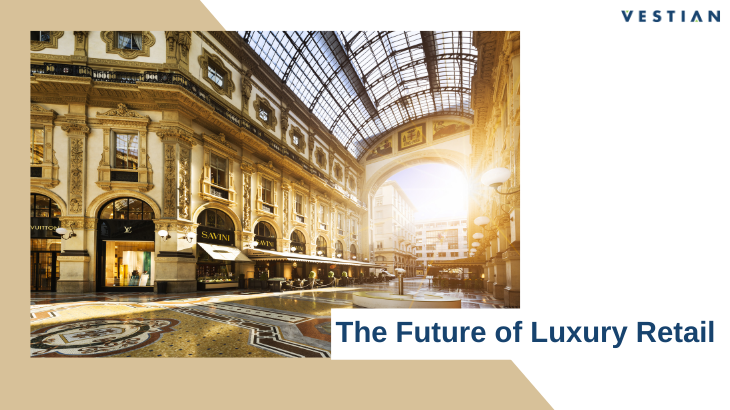Traditionally luxury retailers have relied heavily on brick and mortar stores to drive sales. These showrooms or stores offer potential buyers a high-end experience aligned to the brand, and are typically located in upscale, exclusive neigbourhoods/areas that command premium rentals. However, in the current situation with little or no sales, affording rent is a problem for retailers and as a result, some retailers have been forced to shut down during the lockdown period. According to Bain’s 2020 fall luxury report mentioned in Forbes, the personal luxury goods market sales, which includes fashion, jewelry, watches and beauty products dropped by 23%, which is the highest y-o-y drop recorded in the last 25 years. The turmoil of the pandemic has changed the luxury retail industry and uncertainty is here to stay in the months to come. The report also states that in 2021 the market is expected to recover 50% of the profit loss from 2020. With sales reaching only $331 billion in 2020, the luxury sector is only expected to get back on track by the end of 2022 or early 2023.
In order to keep business running, luxury retailers are shifting their focus to ecommerce as the sales of luxury goods such as bags, suits and dresses witnessed a decline and greater need for products related to comfort or sporting outfits witnessed an uptick. This resulted in luxury retailers adapt to both products and marketing of these products according to the shift in demand. For example, one of the biggest luxury brands Dior recently partnered with Nike to create a selection of ready-to-wear sports clothing for Autumn 2020, inspired by NBA champion Michael Jordan. While some retailers are resorting to job cuts, restructuring, reduction of physical footprint, others are adapting to the current need by developing their own version of the must have accessory – which is the face mask. While brands are being criticised for capitalising on the ongoing global pandemic, in their defence they say that they are in a position to positively impact their customers and promote health awareness by increasing the general awareness and importance of wearing a mask. Focusing on the immediate priority and navigating to adapt to the customers’ need has become the need of the hour. A report by Mckinsey states the review of 2020 inventory is 70% lower than 2019 as customers had very little or no opportunity to explore the spring and summer collections in stores. In order to improve sales for 2020 fall and winter collection brands focused on enhancing digital engagement by either strengthening their existing digital infrastructure or partnering with reputed e-retailers that may not only boost online sales but also lure customers to visit their stores once they reopen. However, some luxury retailers are still on the backfoot when it comes to ecommerce as it is much against their fundamental belief that digital operations do not provide the user experience that a physical store can offer. However, Net-A- Porter’s success has broken this myth and the site has changed peoples thinking towards luxury goods and the way they buy them.
With the ongoing vaccine rollout and life slowly limping back to normalcy, people are still not comfortable to set out and shop. Thus, enhancing digital engagement has become the need of the hour. While stores still remain closed in many parts of the world, ecommerce continues to play a crucial role in keeping sales up, communicating with customers and keeping the brand alive in their minds. While the future of luxury retail is still unpredictable until both tourism and local footfalls return to normalcy, brands will have to find innovate ways to adapt and deliver customer experience using digital technology – both in store and offline.
Luxury retailers are shifting their focus to ecommerce as products related to comfort or sporting outfits witness an uptick.
